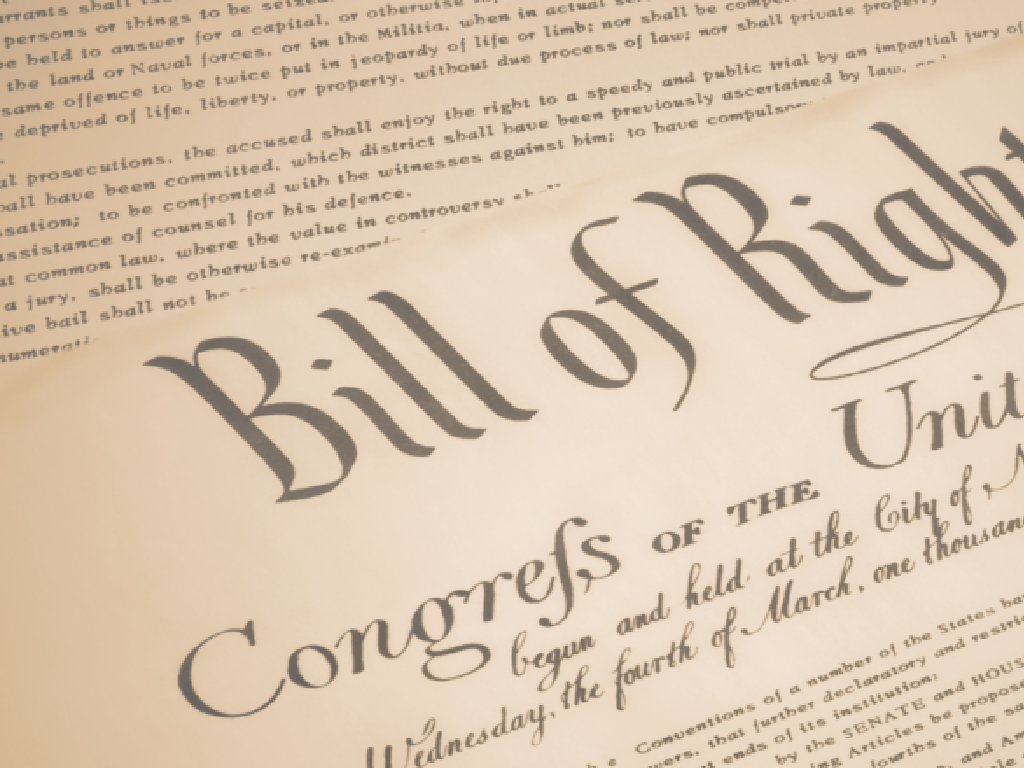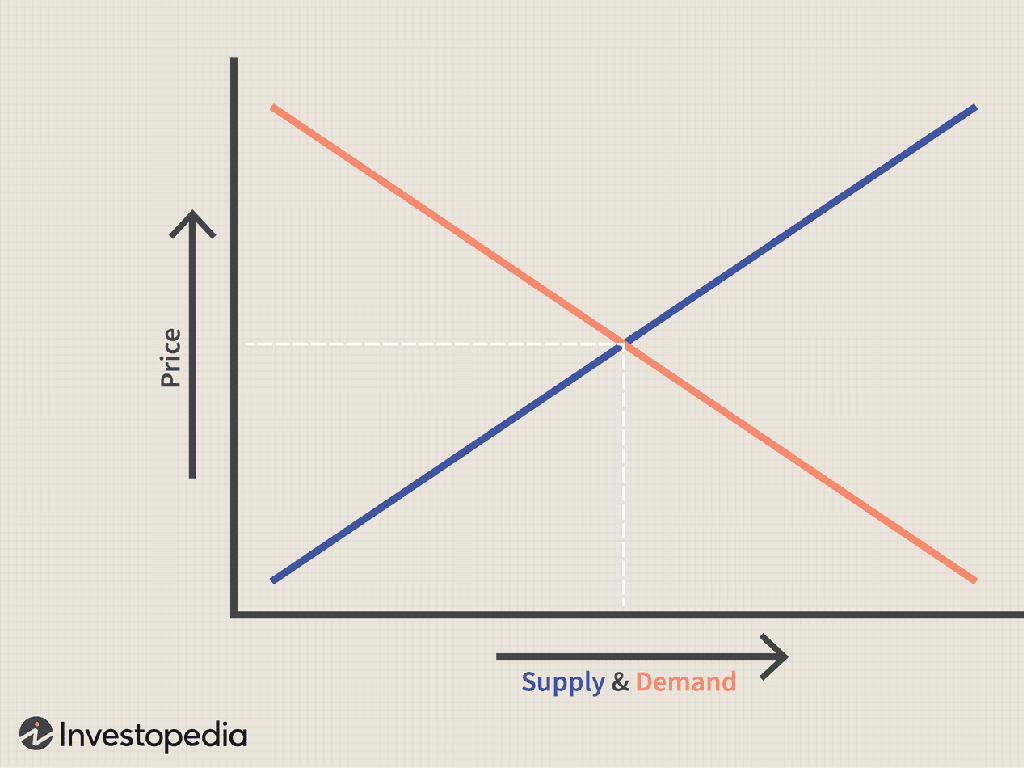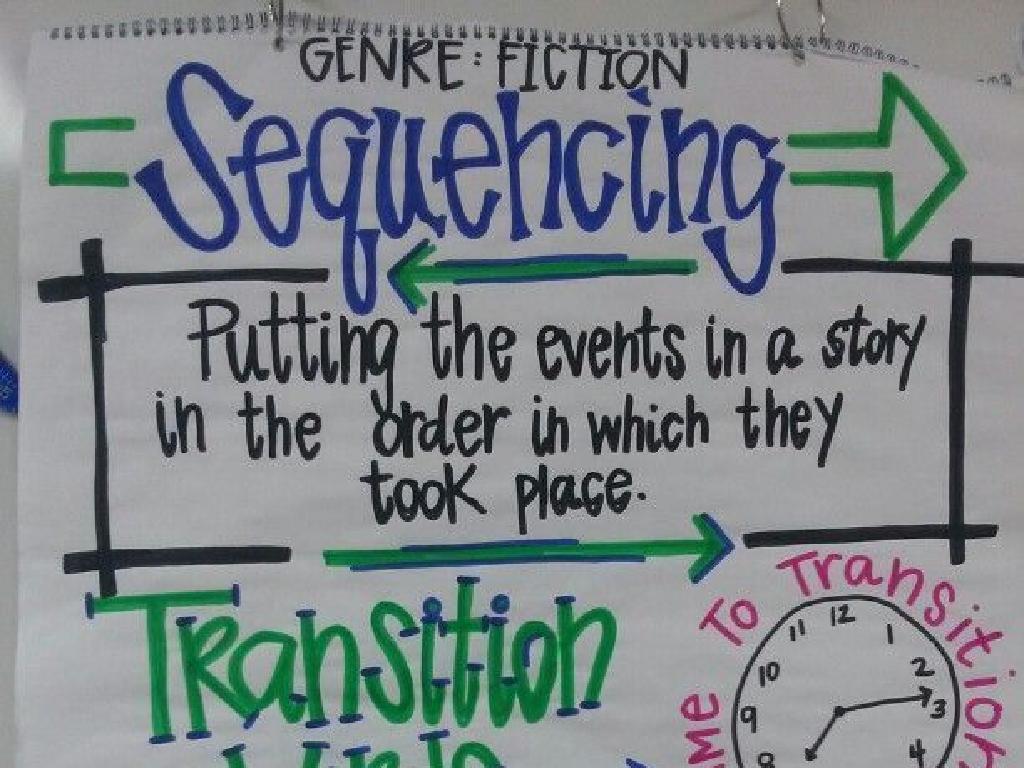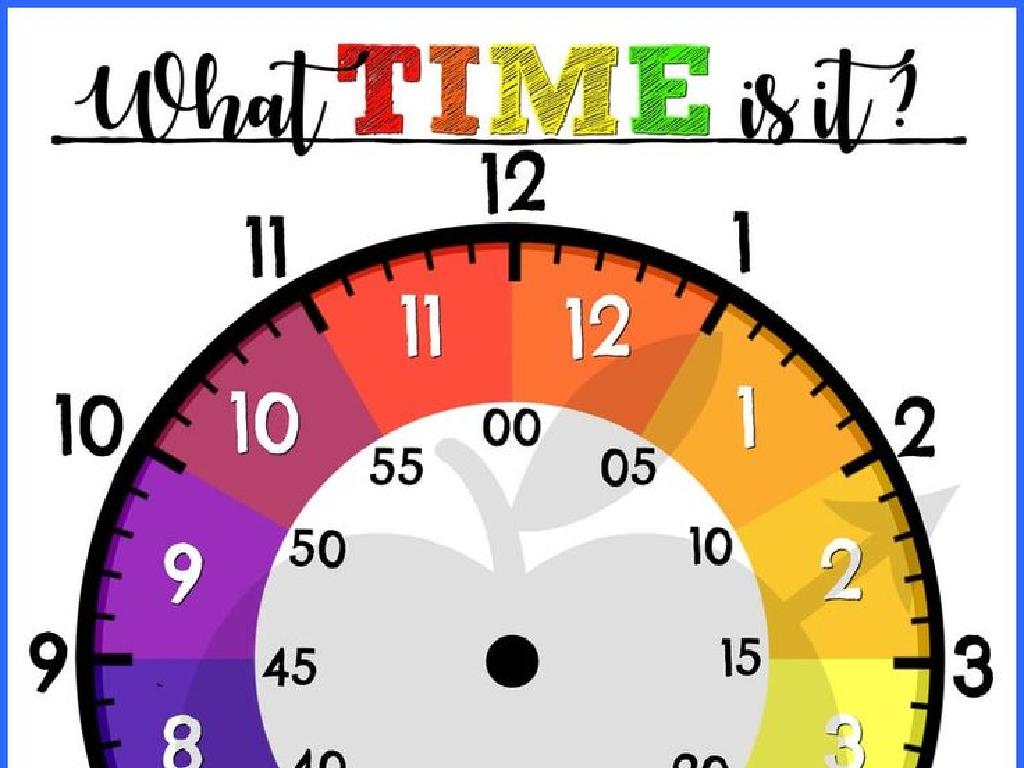Simple Past, Present, And Future Tense: Review
Subject: Language arts
Grade: Eighth grade
Topic: Verb Tense And Mood
Please LOG IN to download the presentation. Access is available to registered users only.
View More Content
Welcome to Verb Tenses!
– Explore English building blocks
– Focus: Past, Present, Future Tense
– Review how to express time in verbs: did (past), do/does (present), will do (future).
– Significance of verb tenses
– Tenses clarify when actions happen, ensuring clear messages.
– Enhancing communication skills
– Using correct tenses improves understanding in writing and speaking.
|
This slide introduces the fundamental concept of verb tenses, which are essential building blocks in English language arts. Students will focus on understanding and reviewing the simple past, present, and future tenses. Emphasize the importance of verb tenses in conveying the timing of actions, which is crucial for effective communication. Provide examples to illustrate how the correct use of tenses can enhance clarity in both written and spoken language. Encourage students to think about how tenses affect the meaning of sentences and to practice forming sentences with different tenses to solidify their understanding.
Exploring Verb Tenses
– Verb tense defined
– Verb tense indicates the time of action or state of being.
– Tense’s role in sentences
– It helps convey when an event occurs in the timeline of a sentence.
– Sentence examples
– ‘I walk’ (present), ‘I walked’ (past), ‘I will walk’ (future).
– Practice identifying tenses
|
This slide introduces the concept of verb tense, which is crucial for students to understand how to correctly convey time in their writing. Verb tense allows us to tell if an action is currently happening, has already happened, or will happen in the future. It’s important for maintaining consistency and clarity in sentence structure. Provide examples of sentences in different tenses and ask students to identify the tense used. Encourage them to create their own sentences using each tense to reinforce their understanding. This review will help solidify their grasp of verb tenses as they prepare for more complex writing tasks.
Review: Simple Past Tense
– Usage of simple past tense
– Used to describe completed actions in the past.
– Regular vs. irregular verbs
– Regular verbs end in -ed; irregular verbs vary.
– Example: ‘I walked to school.’
– ‘Walked’ is a regular verb showing a finished action.
– Example: ‘She wrote a letter.’
– ‘Wrote’ is an irregular verb, not following -ed rule.
|
This slide aims to review the simple past tense, focusing on its usage for actions that were completed in the past. Highlight the difference between regular verbs, which typically end in -ed, and irregular verbs, which have unique past tense forms. Use clear examples to illustrate these points, such as ‘I walked to school yesterday,’ which uses the regular verb ‘walk,’ and ‘She wrote a letter,’ which uses the irregular verb ‘write.’ Encourage students to think of their own examples and to recognize patterns in irregular verb forms. This will help them understand how to correctly use the simple past tense in various contexts.
Exploring Simple Present Tense
– Use simple present for habits
– Describe daily routines and repeated actions
– ‘I eat’ vs. ‘He eats’
– Add ‘s’ or ‘es’ for he, she, it
– Daily activities examples
– ‘We go to the gym every day.’ shows a routine
– Singular vs. Plural forms
– ‘He plays the guitar.’ not ‘He play the guitar.’
|
This slide aims to review the simple present tense, focusing on its use for expressing habits and routines. Highlight the importance of subject-verb agreement, especially the difference in verb forms when using the third person singular (he, she, it) versus other subject pronouns. Use examples that are relatable to the students’ daily lives to illustrate the concept. Encourage students to think of their own routines and how they would describe them using the simple present tense. Emphasize the pattern of adding ‘s’ or ‘es’ to the base verb when the subject is he, she, or it. This will prepare students for more in-depth practice and ensure they understand the foundational rules of verb conjugation in the present tense.
Exploring Simple Future Tense
– Forming future tense with ‘will’
– Use ‘will’ or ‘shall’ before the verb, e.g., ‘I will eat.’
– When to use future tense
– For predictions, promises, or planned actions.
– Example: Homework plans
– ‘I will start my homework after dinner.’ indicates a planned action.
– Example: Travel plans
– ‘She will travel to France next year.’ shows a future plan.
|
This slide reviews the simple future tense, focusing on the use of ‘will’ and ‘shall’ to form this tense. Emphasize that ‘shall’ is more formal and less common in modern English, especially in American English. The simple future tense is used for actions that haven’t happened yet but are planned or expected to occur in the future. Provide students with examples and ask them to create their own sentences using the simple future tense. Encourage them to think about events they are looking forward to and to describe these using ‘will’ to practice forming the tense correctly.
Practice Makes Perfect: Mastering Tenses
– Identify sentence tenses
Determine if the verb is past, present, or future.
– Correct tense mistakes
Find and fix incorrect verb tenses in given sentences.
– Create sentences with tenses
Write original sentences using past, present, and future tenses.
– Share and review with class
Exchange sentences with peers for feedback.
|
This slide is aimed at reinforcing the students’ understanding of verb tenses through practical exercises. Start by having students identify the tenses in various example sentences. Then, present sentences with incorrect tenses for students to correct, which will help them apply their knowledge. Encourage creativity as they create their own sentences using each tense, ensuring they grasp the concept of time in verb usage. Finally, have students share their sentences with the class or in small groups to learn from each other and discuss any common challenges they may have encountered. This peer review process will foster collaborative learning and reinforce their understanding of verb tenses.
Class Activity: Time Travelers
– Divide into groups for a story
– Use past, present, and future tenses
– Incorporate events that happened, are happening, and will happen
– Create a short story together
– Present and identify tenses used
– Highlight where each tense is used in your story
|
This activity is designed to reinforce the students’ understanding of verb tenses through creative writing. Divide the class into small groups and instruct them to craft a short story that includes events from the past, present, and future, using the appropriate tenses. This will help them apply their knowledge of simple past, present, and future tenses in a practical context. After the stories are written, each group will present their story to the class and point out the tenses they used. This peer-to-peer learning will help students see practical examples of tense usage. Possible variations of the activity could include writing a story that takes place in different time periods, creating a time travel diary, or describing a day in the life of a historical figure using all three tenses.
Review and Reflection: Verb Tenses
– Recap of today’s lesson
– Importance of correct verb tenses
– Using the right tense clarifies time of actions
– Discuss challenges faced
– Were there any tenses that were difficult?
– Share enjoyable moments
– What part of today’s lesson did you like most?
|
This slide aims to consolidate the students’ understanding of verb tenses and reflect on the importance of their correct usage in writing and speaking. It’s crucial for students to recognize that verb tenses help to convey the timing of actions accurately, which is essential for clear communication. Encourage students to openly discuss any difficulties they encountered during the lesson, as this can help identify common areas of confusion that may need further review. Additionally, ask students to share aspects of the lesson they found enjoyable or interesting, fostering a positive learning environment and helping them to associate learning grammar with a pleasant experience. This reflection not only reinforces the day’s learning objectives but also promotes self-assessment and active participation.
Homework: Mastering Verb Tenses Through Diary Writing
– Write a diary entry with different tenses
– Mix past, present, and future tenses to describe events
– Highlight each tense used
– Use color codes or labels for past, present, and future
– Reflect on your tense choices
– Think about why you chose a specific tense for each event
– Get ready to discuss in class
|
This homework assignment is designed to reinforce students’ understanding of verb tenses. By writing a diary entry, students will practice applying past, present, and future tenses in a personal and meaningful context. Encourage them to clearly identify each tense they use, possibly by underlining or using different colors for each tense. This will help them visually distinguish between the tenses. In the next class, be prepared to facilitate a discussion where students can share their experiences and reflect on their understanding of verb tenses. This activity will also enhance their narrative skills and ability to express themselves in writing.






